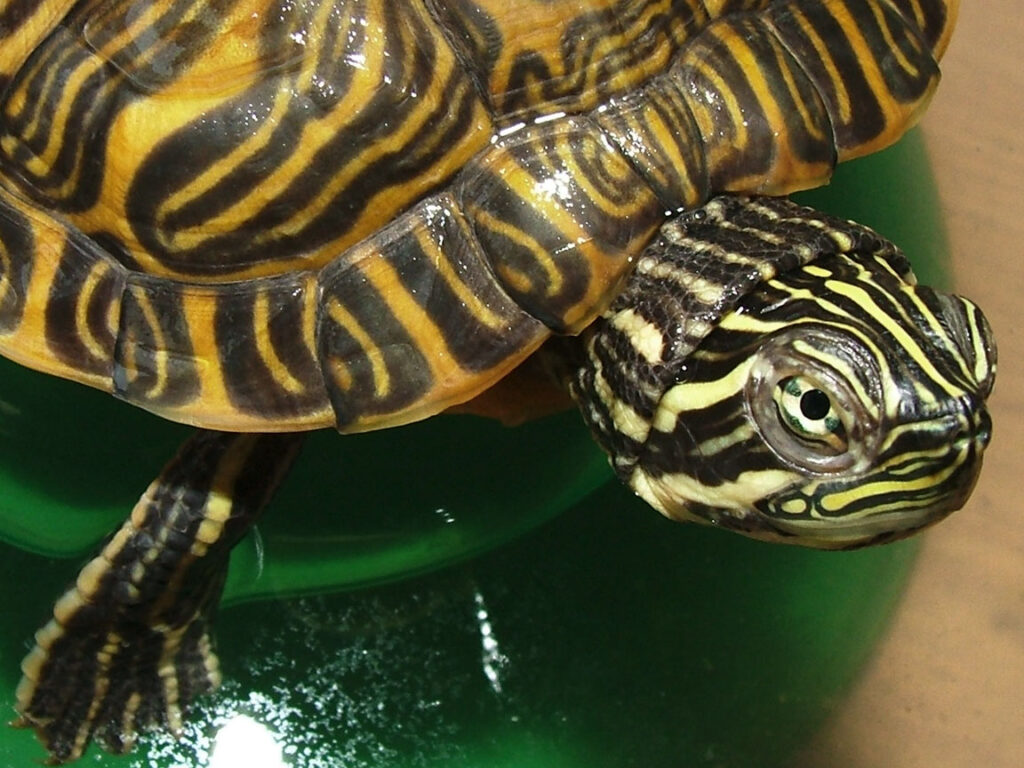Sharp-Tailed Snakes and Western Painted Turtles
This project addressed the threats of habitat fragmentation and/or loss for endangered Sharp-tailed Snakes and Western Painted Turtles. The project took place in the Cowichan Valley on the South East coast of Vancouver Island. This area lies within the Coastal Douglas-fir biogeoclimatic zone including of Garry Oak ecosystems and has many wetlands were endangered and threatened species are known to occur.
This project was carried out under the guidance of the Sharp-tailed Snake and Western Painted Turtle Recovery Teams and provided essential information to further recovery actions and filled a knowledge gap.
This project aimed to protect Sharp-tailed Snakes and to restore, enhance or protect Western Painted Turtle habitat by initiating stewardship activities with private landowners. Landowners were engaged in stewardship activities such as detection, restoration and protection of habitat.
The Recovery Teams were able to use the information gathered to further their assessments and recommendations.
Goals and Objectives: The goal of this project was to protect Sharp-tailed Snake habitat and restore, enhance or protect Western Painted Turtle habitat by initiating landowner stewardship of their habitats and associated ecosystems. It engaged private landowners and public land managers in habitat protection and improvement measures which resulted in the implementation of stewardship initiatives and recovery actions. The objectives were to (1) map suitable Sharp-tailed Snake habitat and select about 20 landowners for site visits, (2) engage 10 landowners in detecting the Sharp-tailed Snakes using artificial cover objects, (3) map suitable wetlands for Western Painted Turtles and select about 10 landowners for site visits, (4) engage 5 landowners in Western Painted Turtle stewardship such as detection, restoration and protection of habitat.
Methods: This project mapped potential Sharp-tailed Snake and Western Painted Turtle habitat in the Cowichan Valley by using orthophotos, anecdotal evidence and local knowledge. From the maps and local knowledge, properties with suitable habitat were identified and landowners with interest in participating in project were engaged in site visits and stewardship activities (installing artificial cover objects at suitable micro-habitats for Sharp-tailed Snake and/or determining the presence of Western Painted Turtle, assessing threats, developing an enhancement or restoration plan, and executing it). Cowichan Land Trusts staff is experienced in mapping and landowner contact programs. Staff worked closely with biologists with expertise in the target species to ensure that stewardship guidelines and on-the-ground activities were conducted using safe and appropriate methods. The methods for each objective were as follows:
Objective 1 – delineate south facing slope with open habitat on orthophotos, use local knowledge to select landowners with interest in participating in project;
Objective 2 – contact, organize visits, conduct landowner visits assess habitat, and install artificial cover objects at suitable micro-habitats;
Objective 3 – use local knowledge, anecdotal evidence and orthophotos to identify suitable wetlands, use local knowledge to select landowners with interest in participating in project;
Objective 4 – contact, organize visits, conduct landowner visits, assess habitat and determine the presence of the species (because detecting and identifying turtles require training, biologists with turtle experience will be on site assisting the landowner), assess threats, develop one enhancement or restoration plan, and execute it.

